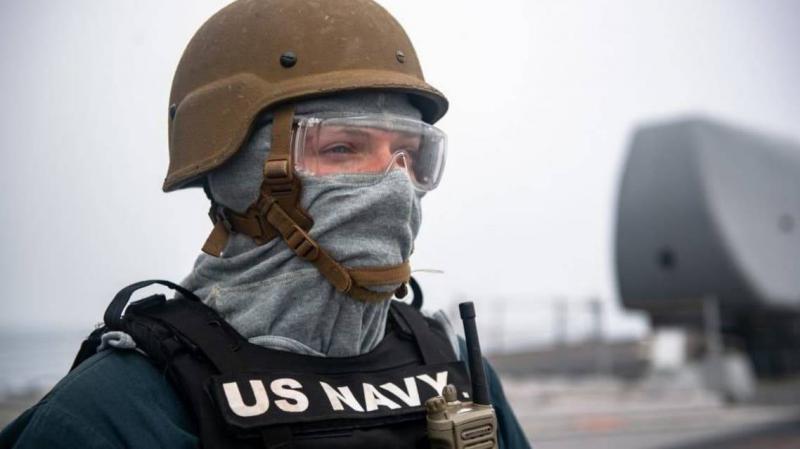The region ranging from the Arabian Gulf to the Arabian Sea has witnessed a massive U.S. military buildup over the past ten weeks, and now withdrawals have begun following the end of the war in Afghanistan. The United States has deployed the aircraft carrier Ronald Reagan to the Arabian Sea for over two months, accompanied by more than 180 aircraft and helicopters, as well as additional forces such as the ships Shiloh and Helsey and a destroyer escort group. Additionally, the Iwo Jima strike group, which is comparable to the carrier strike group in terms of independence but smaller in size, has been deployed in the region.
In military bases, it was noted that the Americans sent six B-52 bombers, capable of flying at high altitudes for long hours and bombing targets with large bombs and occasionally nuclear bombs, to Al Udeid Air Base in Qatar. The U.S. also sent two squadrons of F-18 Hornets to Prince Sultan Air Base in Saudi Arabia.
U.S. Withdrawals
With the completion of the withdrawal from Afghanistan and the anniversary of September 11, special sources confirmed to Al Arabiya and Al Hadath that we will witness a rapid reduction of U.S. military forces. Daily deployment maps indicate that the Iwo Jima strike group has crossed the Strait of Hormuz from the Arabian Gulf to the Arabian Sea, now heading alongside the Yemeni coasts toward the Horn of Africa and likely rising to the Red Sea and crossing the Suez Canal. Additionally, U.S. military leaders will begin withdrawing the two squadrons of F-18s from Saudi Arabia without replacing them with another air force. These sources also confirmed that the B-52 squadron will withdraw from Al Udeid Air Base, likely returning to bases in the United States very soon.
Deterrence Levels
Sources from Al Arabiya and Al Hadath also indicated that the U.S. plans to replace the aircraft carrier Ronald Reagan as soon as possible, wanting to maintain a considerable naval force in the region. Another aircraft carrier is likely to replace the Ronald Reagan, and if this does not occur due to technical reasons, strike naval forces will fill the gap. In fact, the Essex strike group has already arrived in the Arabian Sea, equivalent in strength to the Iwo Jima and can fill the void if the Ronald Reagan withdraws. It is essential to look at the force levels over the following weeks, as this will reveal the reality of the U.S. military strategy in the area of Central Command operations.
For months, the Americans dismantled missile defense batteries in Saudi Arabia, and they repeated this a week ago, even as Iran continues to threaten the security of neighboring Gulf states, either directly or by sending hundreds of missiles and drones to the Houthis in Yemen. For months, they have expanded their threats by sending precision missiles to their militias in Iraq and Syria after providing Hezbollah with thousands of missiles, including precision missiles.
U.S. Commitments
John Kirby, the Pentagon spokesman, stated in a press briefing on Monday that the United States has sufficient military capabilities to counter threats, and he sent a statement to the Associated Press stating that the U.S. has a broad and deep commitment to its allies in the Middle East. He added that the Department of Defense maintains hundreds of thousands of troops and significant forces in the Middle East, which represents the most advanced air forces and the most capable naval forces to support U.S. interests and regional partners.
It is very notable that Americans, particularly U.S. presidents, have spoken over the past two decades about reducing or withdrawing forces from the Middle East in one way or another, yet they find themselves obliged to remain in the region, a stance that the current President Joe Biden has reached. The withdrawal from Afghanistan means that the U.S. must implement a "strategy over the horizon," combatting al-Qaeda, ISIS-K, and possibly the Taliban from outside Afghanistan. With Pakistan and Central Asian countries refusing to host U.S. bases and aircraft, the United States will have to maintain, and potentially increase, the number of its troops and equipment in Gulf States.
Iranian Threat
It is also interesting that the Biden administration has begun to realize more than ever the dangers of the Iranian regime to its interests and those of Middle Eastern countries. The Americans have so far failed to persuade Iran to return to compliance with the nuclear agreement, while Tehran is rapidly stockpiling uranium. Washington has also failed to convince Iran to stop its support for the Houthis and has not succeeded in getting the Houthis to halt their attacks on Saudi Arabia, where more than seventy thousand Americans reside. Sources from Al Arabiya and Al Hadath confirm that to address all these risks, particularly from Iran, the United States will retain forces in the region equivalent to what they were at the beginning of 2021 with only minor technical adjustments.




